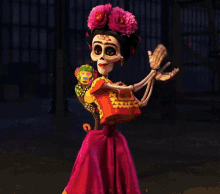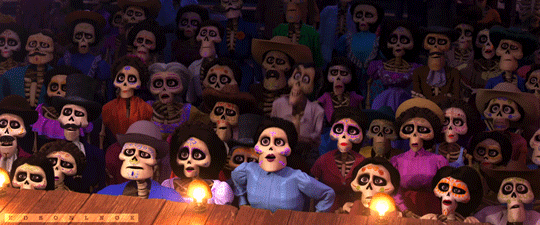
The scoop
All behind about the Mexican Halloween




By: Carolina Rodriguez 10°C
There’s nothing like experiencing the festive tradition “Dia de los muertos” in Mexico. This event occupies the following two days, November the 1st and 2nd. It is commonly recognized as the most representative tradition of the Mexican culture and it’s from the Aztec culture that became popular in all Latin-American. According to the tradition the popular belief states that the souls of the loved ones that had gone, come back during this two days. It seems to be scary, but the families of the deceased, see this day as the opportunity to meet again with their close relatives. Furthermore, the families are used to receiving the souls with an offering where they place their favorite food and drink, fruit, sweet “calaveritas”and, if necessary, toys for the children. Along with this tradition, it also involves visiting the cemeteries. Either during the day or night, families come and place candles on graves as a way to illuminate the path of souls on their return home.
The origins from this festival arise from the Maya, Aztec, Nahau and Totonac civilizations. In pre- Hispanic times it was common to preserve the skulls as trophies for showing them during the rituals to symbolize death and renaissance. It should be noted that the most representative element during this festivity are the altars with offerings, a representation of the vision of death, full of memories and significance. Moreover, the altars have a special organization, they have levels depending on the family customs. It can be used two, three, or either seven levels. The altar of two levels, the most common nowadays, represent the division of heaven and the earth. Otherwise, the altars of three levels represent the sky, the earth and the underworld, though they can be referred as elements of the Holy Trinity. Nevertheless, the traditional altar is the one of seven levels. It represents the levels that the soul should pass for reaching spiritual rest. Each step has a different meaning. it can be covered with tablecloths, chopped paper, banana leaves, “palmillas” and “tule” mats. The image of the family devotion saint is placed on the highest level; the second level is destined for the souls. In the third, the symbol of purification, the salt is placed. In the fourth the bread, which is offered as food and as consecration; in the fifth people organize the favorite fruits and dishes for the deceased. In the sixth the photographs of the deceased to whom the altar is dedicated are shown and finally, in the seventh, a cross formed by flowers, seeds or fruits.
The celebration of the Day of the Dead is considered a special tradition that is passed through generations and varies from region to region. This tradition has only one common principle. Families gather to welcome the souls, place their offerings and attend religious services while sharing food. Although people get spiritually prepared for this celebration, they also makeup as a figure of skull and crossbones, they design their own costumes and work hard for building the altars.